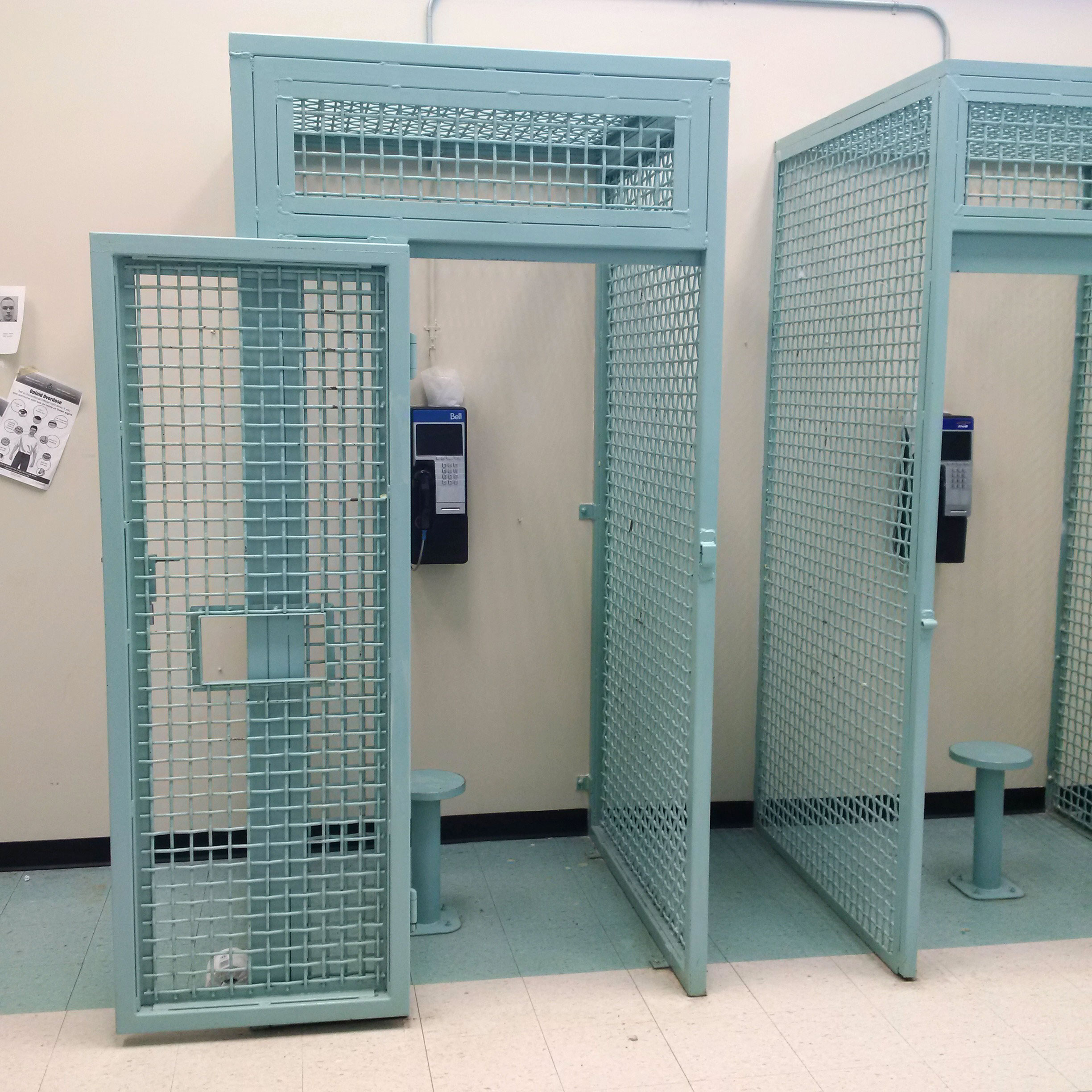Interview
Ivan Zinger
Correctional Investigator of Canada
What is the role and importance of the Office of the Correctional Investigator of Canada (OCI)?
IZ: As the Ombudsman for federal corrections, I investigate complaints from inmates or offenders serving the remainder of their sentences in the community.
I have a great deal of legal authority to investigate – I can enter any penitentiary at any time; I can interview, with confidentiality, any prisoner; I can even subpoena correctional staff to testify. In addition, I can hold public hearings, have people testify under oath, and am entitled to any document pursuant to an investigation.
Despite these legal authorities, my power is limited to making recommendations, which are not binding upon the Correctional Service of Canada (CSC).
What are the priorities that guide your Office’s efforts, that is, the areas that reflect the ongoing challenges facing the correctional system in responding to individual complaints and systemic areas of concern?
IZ: We have several corporate priorities, but certainly this past year, COVID has been an overriding preoccupation. One of our priorities is conditions of confinement. We work to ensure that prison conditions are appropriate, safe and humane.
In Canada, we have some very old prison infrastructure: most are 40 or 50 years old, and they do not reflect the current modern philosophy of rehabilitation and safe reintegration. My Office has a long history of speaking out against solitary confinement, which is the practice of holding a prisoner in a cell for 23 hours or more. Last year, we had new legislation that replaced the former administrative segregation regime. Of course, with COVID, the compliance concerning those legal requirements has been very challenging.
The Correctional Service, by law, must provide rehabilitative programming to reduce the risk of reoffending. Because of the pandemic, access to correctional programs and interventions was suspended during the first wave of the pandemic (end of March to mid-May 2020) and severely restricted during the second wave (beginning mid-November 2020).
Our data shows that access to programs is between 30 to 50% of what it used to be before COVID. Without providing those programs, offenders will end up serving longer sentences because they cannot get parole unless they have fulfilled those programs. That has an impact on liberties, and we are quite concerned about it. Women’s corrections are also one of our priorities.
In Canada, we have five regional penitentiaries for women. Twenty-five years ago, when those facilities were first launched, there was a genuine commitment to providing a women-centred approach to corrections, a philosophy that has been significantly eroded over the years. It has been a real challenge to do differently, especially with maximum-security units for women, which are very austere and have limited access to programming.
Another critical priority for us is indigenous offenders. We have a disproportionate over-representation of indigenous people in federal prisons. In Canadian society, indigenous people represent about 5% of the population, but they make up 31.5% of the inmate population and 42% of incarcerated women are indigenous.
Correctional outcomes for indigenous individuals are overwhelmingly adverse: indigenous prisoners tend to serve a longer part of their sentence in prison before release; they tend to be housed in higher security institutions; they are subject to force more often and more often placed in SIUs.
Moreover, indigenous prisoners tend to self-harm more often and, once released, are more likely to have their parole suspended or revoked. The recidivism or reoffending rates for indigenous people is much higher. We’ve been pushing the Correctional Service of Canada to do things differently, but it has been a real uphill battle.
Access to healthcare is also one of our priorities, particularly mental health. We have a disproportionate number of people coming into the system with significant mental health problems. Among men, approximately 35% of admissions have a mental health issue of some kind, and for women, it is more than 50%. The CSC has had a hard time responding to those prevalence rates.
A few years ago, we did a report on ageing and dying in prison. We have a significant number of older prisoners (age 55 or over) and have others who are palliative or terminally ill and who, in my view, should not be in prison. There are inmates with dementia, Alzheimer, mobility restrictions, and some are even bedridden.
It would be better to transfer those individuals to serve the remaining part of their sentences in hospices or long-term care facilities in the community. By shifting resources from institutional to community corrections, CSC could easily pay to create bed space in the community.
More recently, we have been dealing with the issue of medical assistance in dying (or MAID) in federal corrections. MAID should be available to anyone in the country, including those who are incarcerated.
However, I do not think that the procedure should be carried out inside a penitentiary, which is inappropriate and unethical. Proposed legislation may broaden access to medical assistance in dying, and my Office has made some proposals to prohibit it from being performed inside a penitentiary.

How is the process through which your Office contributes to safe, legal and humane federal corrections in Canada?
IZ: We receive 5,000 to 6,000 individual complaints every year, which my staff takes via telephone, mail, or (pre-COVID) in person at the institutions.
Each year, our investigators and I spend about 400 days in penitentiaries, onsite, interviewing inmates, and talking to staff. We look for compliance with the law and fair decision-making. If we find non-compliance, we make recommendations, typically to the warden, and we try to resolve matters informally and at the lowest levels possible. We also specialise in systemic investigations, which look at areas of general or specific concern, often in areas where we have many complaints.
We have completed systemic investigations in indigenous corrections, suicide and self-harm, black offenders, ageing and younger (under 21) offenders, education, work and vocational training, and all those reports are on our website. Moreover, we issue an annual report that is tabled before Parliament.
Each report contains a series of systemic-level recommendations, which are typically directed to the Commissioner of the CSC and are designed to effect change and improve compliance. We also make recommendations to the Minister of Public Safety. When we make recommendations at the institutional level, we generally have a great deal of success; for instance, we usually get good traction on our recommendations when approaching the warden.
However, progress on systemic issues is slower. There are recommendations that we have made time and again over a decade. It is not unusual for an Ombudsman to have some frustrations, but I have looked at CSC’s budget and staffing contingent, and I have found is that it is one of the highest resourced correctional organisations in the world.
The CSC has an inmate to staff ratio of one to one, which is extraordinarily rich by any measure. You would think that, with that kind of resourcing, we would have excellent correctional outcomes, but unfortunately, Canada is falling behind on several areas, including, for example, inmate access to the digital world. Federal inmates do not have access to monitored email or supervised use of the internet, so it is not a question of money but rather an issue of priorities.



(…) Progress on systemic issues is slower. There are recommendations that we have made time and again over a decade.
What kind of relationship and collaboration is there between your Office and the Correctional Service of Canada?
IZ: As an ombudsman and oversight agency, it is quite likely that there will be a degree of tension between the overseer and the overseen. If you are too friendly, too close or too accommodating, then chances are you are not doing your job.
If, on the other hand, the relationship is negative or toxic, you are not likely to have any of your recommendations accepted. Too much tension is not productive, but too little tension is not necessarily desirable either. You have to collaborate to get Corrections to move in the right direction; if it doesn’t, you must find other mechanisms to apply pressure.
As an ombudsman, I have many tools to raise awareness and have my recommendations acted upon. I am fairly active in the media, where I try to raise awareness of the issues. I am often requested to appear before parliamentary committees.
Our website is also visited quite frequently. Our investigations are relied upon by academics, the courts, NGOs, stakeholders, and other advocates. Our findings are often cited in court decisions and have found their way into Supreme Court of Canada decisions.
What conclusions do you draw from the Correctional Service’s management of the Covid-19 pandemic?
IZ: I have issued several status reports on the impacts of COVID-19 on federal corrections.
In the first wave of the pandemic, six penitentiaries experienced an outbreak, and a total of 360 inmates were infected with the virus. In the second wave, beginning in mid-November 2020, 13 different federal institutions have experienced outbreaks.
The second wave case count is more than 2.5 times greater than in the first wave. Since the start of the pandemic, just over 10% of the total inmate population has had a positive COVID-19 diagnosis, a significantly higher infection rate than in the general population. These demographics would suggest that, like other congregate living settings, prisons are much more susceptible to the widespread transmission of COVID-19.
The difference is that prisons are enforced congregate settings where people are held in close proximity with one another, with little or no possibility of social distancing. For elderly and medically compromised inmates, the risk of contracting COVID inside prison can be life-altering or even deadly.
I remain concerned by the cumulative and, in some cases, indefinite nature of restrictive confinement and extended periods of lockdowns on inmate physical health and mental well-being.
The measures adopted to control outbreaks – near-total cellular isolation, fresh air exercise once every two or three days, 20 minutes of out of cell time every other day to shower or use the telephone – are exceptional and difficult. To its credit, CSC’s pandemic response continues to evolve as more is learned about the disease and how its spread can be avoided or contained in prisons.
We have seen much more mass testing in prisons during the second wave. CSC has improved its video visitation capacity, allowing inmates to remain connected with family and loved ones when most prisons are still closed to outside visits.
CSC has also opened its doors to the Canadian Red Cross, helping them manage bigger outbreaks. Inmate vaccination has begun, and I am encouraged that CSC is following the advice and guidance of the National Advisory Committee on Vaccination.
More could be done – we still do not have a coordinated plan that would see the elderly or medically compromised who pose no risk to public safety transferred to community settings. I have called for more programs to be delivered in the community.
I think the time has come to reallocate staff and resources to better support safe, timely and healthy community reintegration and examine the gradual closing of some ageing and antiquated prisons, some of which have been hit particularly hard by COVID.



We are now doing visits virtually through video calls with inmates (...) We have entirely changed our model, but we can't wait to go back to penitentiaries.
What is the impact and main challenges of the pandemic concerning the service provided by the OCI?
IZ: We had to suspend prison visits. In the first wave, penitentiaries were closed to visitors, including my Office, beginning mid-March. We had to adapt.
Most staff continue to work remotely, but we have maintained an essential level of services and operations. We hold regular contacts with inmate committees, management and chiefs of healthcare weekly.
In June and July 2020, we started doing visits again to prisons in Ontario and Quebec, which could be reached by same-day travel. We did about ten of those visits, and then as soon as more cases and the second wave hit, we had to pull back. We are now doing visits virtually through video calls with inmates.
Typically, we would announce visits two weeks in advance, inmates would provide their names if they wished to see us, and we would interview them and hold debriefing sessions with Wardens at the conclusion of our visits.
We are doing all that, but virtually right now. We have entirely changed our model. We can’t wait to go back to penitentiaries, and I am a strong believer that onsite visits and inspections are an essential part of fulfilling our legal mandate.
JT: You chair the “ICPA Expert Network on External Prison Oversight & Human Rights”.
What work is this network carrying out, and what, for you, are the advantages of prison oversight representatives around the world being networked?
IZ: The Expert Network on External Prison Oversight & Human Rights launched in the fall of 2018 and now boasts over 100 members and roughly 30 non-members who subscribe to our bulletins, from 28 countries across all the continents.
This network seeks to facilitate a constructive and professional dialogue between organisations responsible for external prison oversight and prison authorities subject to their oversight. The mission of our network is to share information, best practices, and lessons learned on effective external prison oversight.
To date, our network has published six newsletters covering a range of topics, including solitary confinement, human rights in prisons, and the independence of oversight bodies. Since the first wave of COVID-19, we published two newsletters looking at prison oversight and monitoring during a pandemic and the use of medical isolation and quarantine in prisons.
By engaging in a global exchange of information, we become aware of just how diverse human experience is – even in a narrow field like prison oversight.



Ivan Zinger
Correctional Investigator of Canada
Ivan Zinger was appointed Correctional Investigator of Canada in 2017. He joined the Office of the Correctional Investigator in 2004 and became its Executive Director and General Counsel five years later. Dr Zinger previously held various senior management, policy and research positions in federal public security departments and agencies since joining the public service in 1996. He has a Common Law degree and a PhD in Psychology of Criminal Conduct. He is also an adjunct Professor in the Law Department at Carleton University.


